Welcome to the March 2024 edition of the Curious Tea subscription! Here’s a closer look at the four exciting new teas that we are sharing with our subscribers this month.
Unfortunately due to supply issues, we had to swap one of the teas this month. Instead of the announced Kenyan Purple Green tea, we will be featuring an exciting Sun Rouge green tea from Japan! This is made from a specifically developed tea cultivar and features a colour changing liquor. For the second light tea, we selected a wild green tea from Vietnam that is picked from trees growing at high altitude in ancient forests of northern Vietnam.
For the dark side of the selection we have a black tea from Yunnan Province of China that is made from fine young leaves of naturally occurring purple leaf trees. Finally the last tea to be featured a raw sheng pu-erh, similarly made from the purple leaf trees that has an appealing fruity taste with plenty of pu-erh complexity.
Our Discovery subscription boxes contain 10g taster pouches of all of the above mentioned teas. If you are a subscriber you will benefit from a 10% discount on all teas from our tea shop!
Let’s get into further detail on these teas featured in our March tea subscription boxes.
Muong Khuong Purple Rain
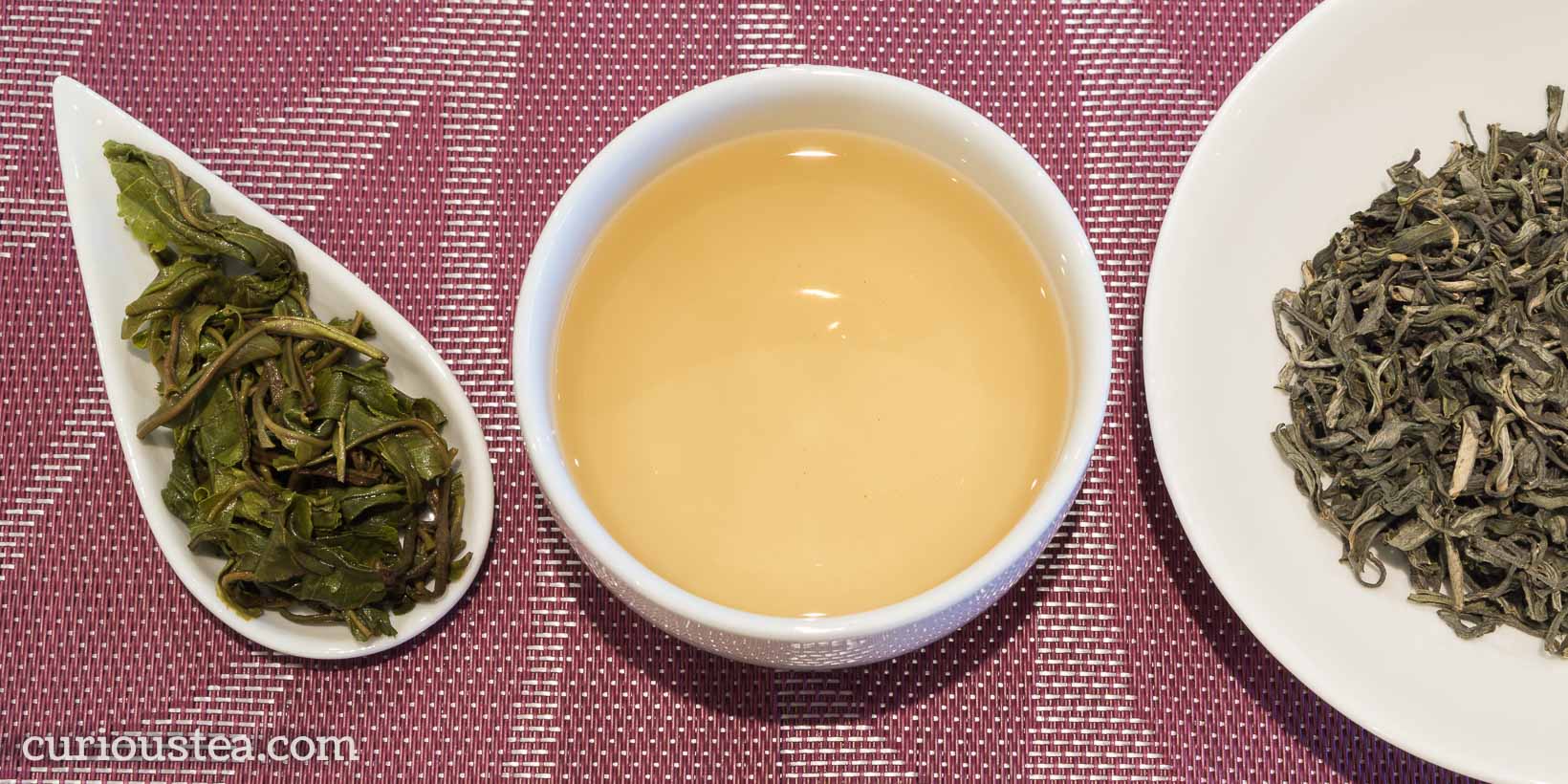
This distinctive Muong Khuong Purple Rain wild green tea comes from Muong Khuong, Lao Cai Province in the Northeast of Vietnam. It is a very true wild tea, which is plucked and processed entirely by the Hmong ethnic families. The Hmong ethnic group started immigrating to this area of Vietnam from the 18th century and came from Southern parts of modern day China, including from Yunnan. As they travelled south they brought with them tea processing techniques and knowledge from China. Traditional teas produced by ethnic groups in Vietnam tend to have some similarities to popular Chinese teas due to similar processing methods employed. April 2023 harvest.
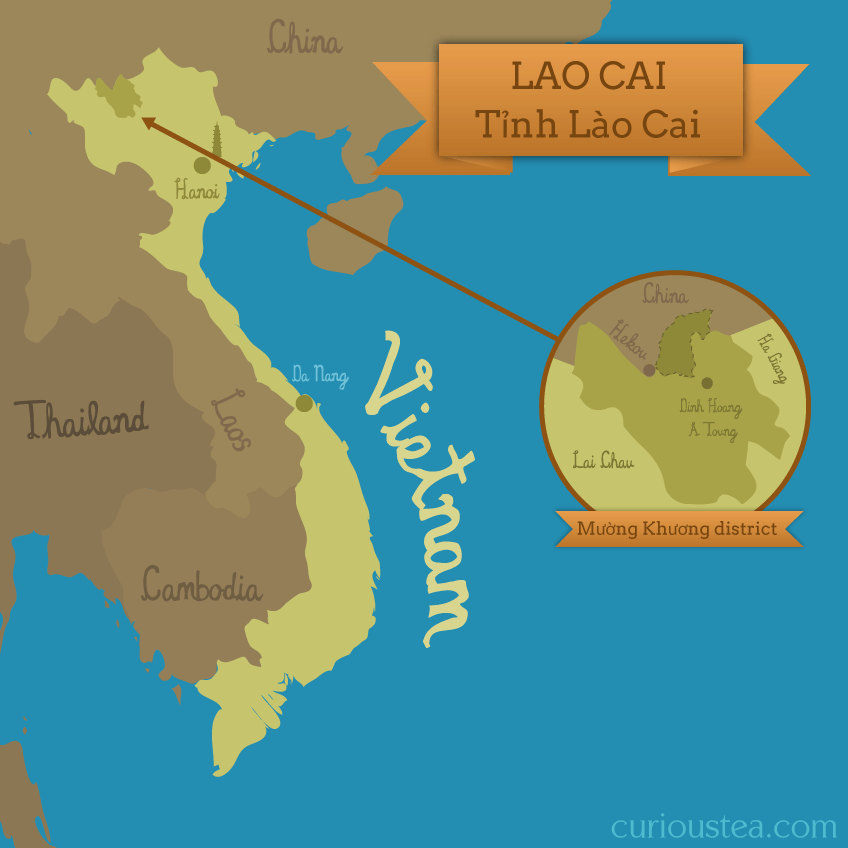
This tea is plucked by hand from wild tea trees that grow in the forests around Muong Khuong at an altitude of around 1,600 metres. It is a long trek to find the trees in the forests but the local hill people make the trek every day during the picking season to these magnificent ancient tea trees (Camellia sinensis var. assamica). The trees themselves are indigenous to these forests and grown completely wild and under organic conditions. As they are left untended, they grow up to 3 metres tall with trunks a few metres in diameter. Some trees are very ancient, with many being centuries old and some purportedly dating back 800 years.
The Purple Rain name for this tea comes from the colour of the young leaves. When plucked many have a purple hue to them which is the result of this specific terroir. This tea is produced almost entirely by hand using very limited technology. The freshly plucked leaves are baked in an oven fired by longan wood, rolled and dried several times until considered finished. This process is carried out by Mr Chiu, in a very small quantity, and relies entirely on his knowledge and expertise.
The flavour profile of this tea is somewhat similar to a young sheng (raw) pu-erh tea. The dry leaves are twisted, wiry and green in colour. The liquor produced is light yellow in colour with a slightly smokey aroma of vegetables and sweet spices. It has a very complex savoury taste reminiscent of earthy green vegetables, kombu seaweed and exotic mushrooms with a hint of smoke. A very unusual cup with an extremely delightful complexity.
This Muong Khuong Purple Rain wild green tea is best brewed at 80°C for 1 minute and should be brewed multiple times. When experimenting with repeated steepings, you can gradually increase the water temperate and steep time to extract fuller flavour.
You can also buy this Muong Khuong Purple Rain in our online shop.
Tokunoshima Sun Rouge
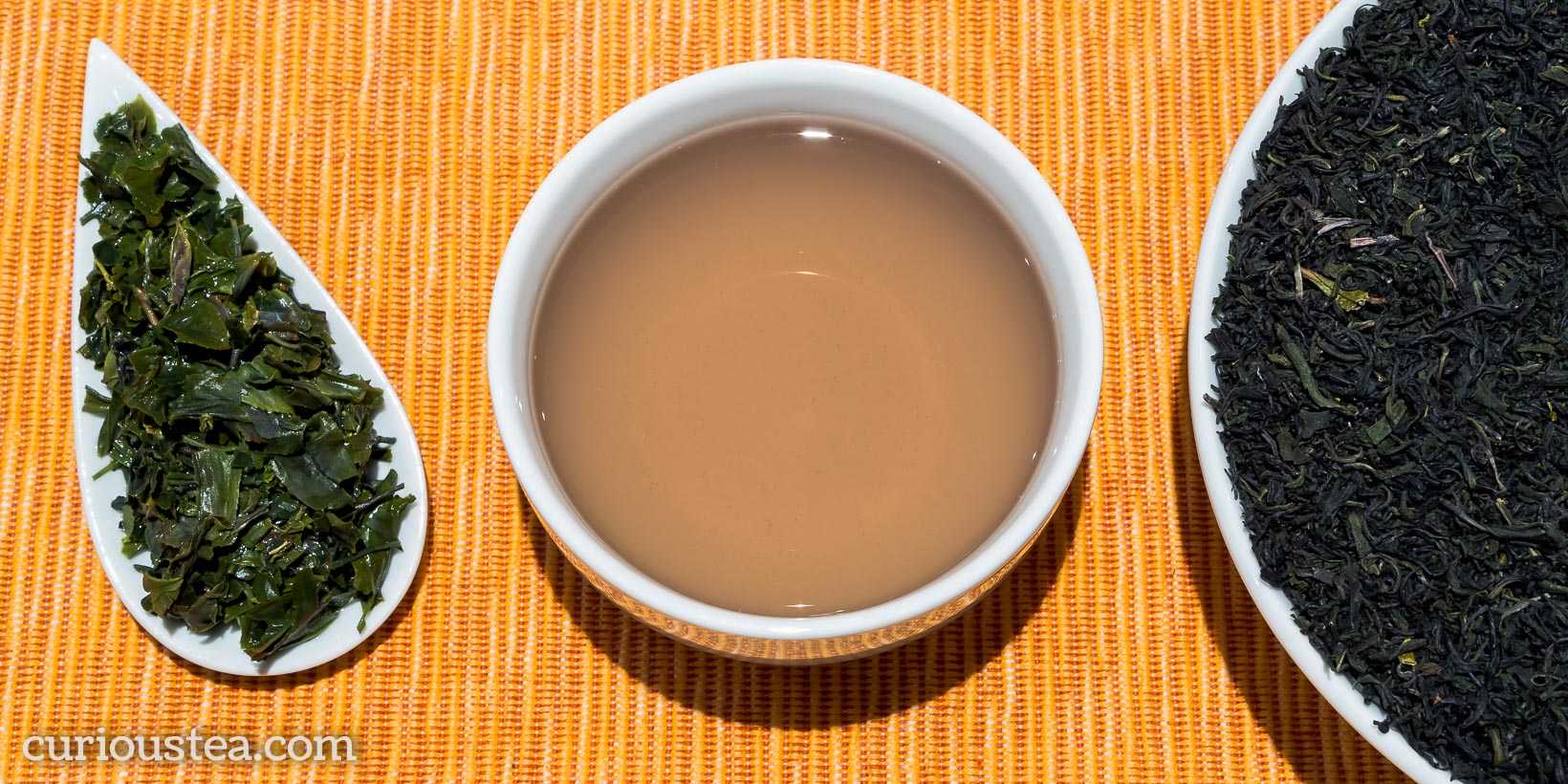
Tokunoshima Sun Rouge is an unusual new type of green tea from Japan. Created from a new ‘Sun Rouge’ purple leaf cultivar, this tea is known for high anthocyanin content and a unique colour-changing liquor! This Sun Rouge tea comes from a plantation on Tokunishima Island (Kagoshima Prefecture) that does not utilise any pesticides. We currently have the May 2022 (Second Flush) harvest.
Tokunoshima Sun Rouge gets its name from the Island of Tokunishima where this tea is grown. The island is located about 100km north of Okinawa and as such enjoys a much warmer climate than the major tea growing regions of the main Japanese islands. The sub-tropical climate combined with the volcanic soil of the island make it an ideal location for this cultivar. The Sun Rouge cultivar itself was only registered in Japan in 2009. It is the result of a 9 year development project to produce a green tea that is high in anthocyanin content. This particular tea was developed by crossing Camellia sinensis var. sinensis with Camellia sinensis var. taliensis from Yunnan Province of China. Taliensis is widely used for making different types of tea from Yunnan, such as our Da Li Cha black tea. Here the crossing of the two tea plant species resulted in a tea with particularly beneficial properties.
Much like our Kenyan Tumoi Nandi Hills Purple green tea, the leaves of these tea plants are tinted reddish-purple. This is the result of the tea plants having higher amounts of anthocyanins in their leaves. This is a natural pigment that also occurs in grapes, blueberries and cranberries and also acts as protection from UV rays. These types of tea can be grown at higher altitude and closer to the equator. Purple tea can also be found naturally occurring in Yunnan Province in China where they are subject to strong sunlight and harsh growing conditions. If you would like to see what other teas of this type on offer in our shop, please check out our Purple Tea page!

This Tokunoshima Sun Rouge is processed slightly differently to traditional Japanese green teas: it is pan-fried rather than steamed. This results in a dry leaf appearance that is more similar to a pan-fried Chinese green tea. However the dry leaf does have a much darker green appearance than is typical of many other pan-fried green tea types. The colour of the liquor changes depending on the water you use and comes out in a range of colours between: bright pink – colourless – purple-grey. The colour in your cup will largely depend on the pH level of the water that you use! When using water with a high pH (less acidic), the colour will be duller and darker. Now for the fun science part of this tea! In most cases your water will have a medium to high pH level, so your tea will be either dull green or dark purple-grey. When you lower the pH level of the water used, the colour will come out lighter and more bright red or pink. Hence this tea is also often known as ‘Pink Tea’. You can do this easily by adding a few drops of lemon juice to the brewed cup. You will notice the colour change from dark purple-grey to a bright pink! This is the direct interaction between very high anthocyanin content and acidity of the water. You do not get the same interaction with other teas as they typically will have much lower anthocyanin content.
Flavour-wise, this Tokunoshima Sun Rouge is also not typical of other Japanese green teas. The pan-roasting and high anthocyanin content produces a brewed cup that is most unusual. When brewed normally, the taste is verdant, peppery and grassy with pronounced savoury and umami notes and a fresh, herbaceous profile. There are further marine notes of kombu seaweed and a light astringency on the mineral aftertaste.
Tokunoshima Sun Rouge is best brewed at 80°C for 2-3 minutes, with multiple infusions. Depending on brewing parameters and personal preferences the very high anthocyanin content may cause the flavour of this tea to be too astringent for some drinkers to fully enjoy this tea. In such case we recommend either enjoying it with added fruits and honey or cold-brewing this tea. The best cold-brew parameters are 10g of tea to 1l of water left in a fridge for around 8 hours, or overnight.
You can buy this Tokunoshima Sun Rouge green tea in our online shop.
Zi Ya Purple Bud Wild Sheng Pu-erh
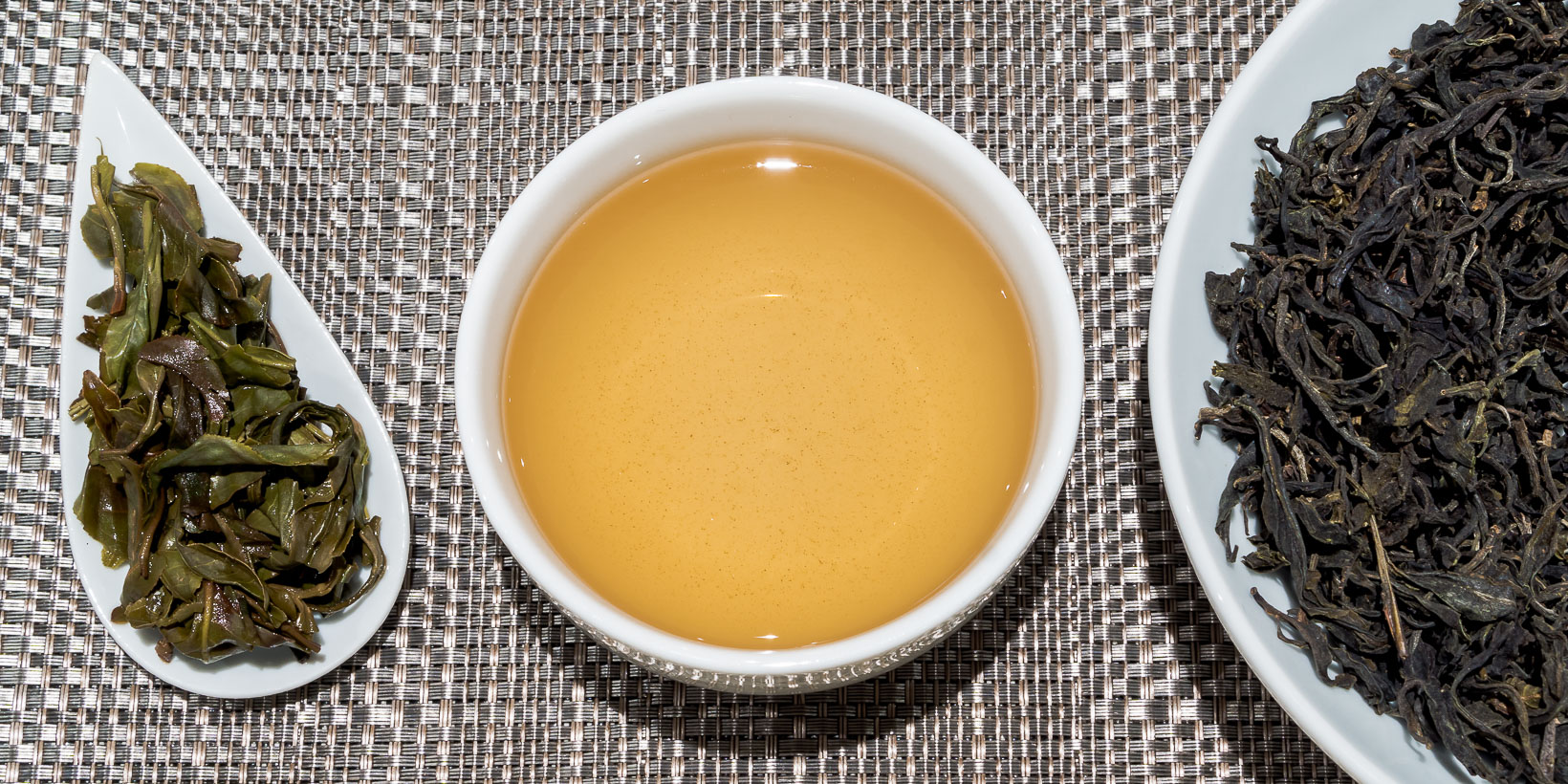
Zi Ya Purple Bud Wild Sheng Pu-erh (紫芽普洱生茶) is a sheng (raw) pu-erh from the Jingmai mountain area located in Lancang Lahu Autonomous County of Yunnan Province. Grown at high altitude, this tea has a lovely complex profile with almost no astringency. This tea was picked in late March to early April 2020 from young tender leaves. While this pu-erh has not really been aged for that long, it already possesses a good flavour that will only improve with further ageing.
Pu-erh tea undergoes a unique production process, during which the tea leaves are dried and rolled after which they undergo secondary microbial fermentation and oxidation. This unique processing sets it apart from black tea and means that pu-erh fits within the separate dark teas category. The tea is most commonly pressed into various shapes (domes, disks, bricks, etc) or, just like this tea, it can be left loose and the gradual fermentation and maturation process continues further, during storage. As this is a sheng pu-erh, the ageing process has been happening slowly and naturally since spring 2020. This type of tea improves with age if they are stored properly.
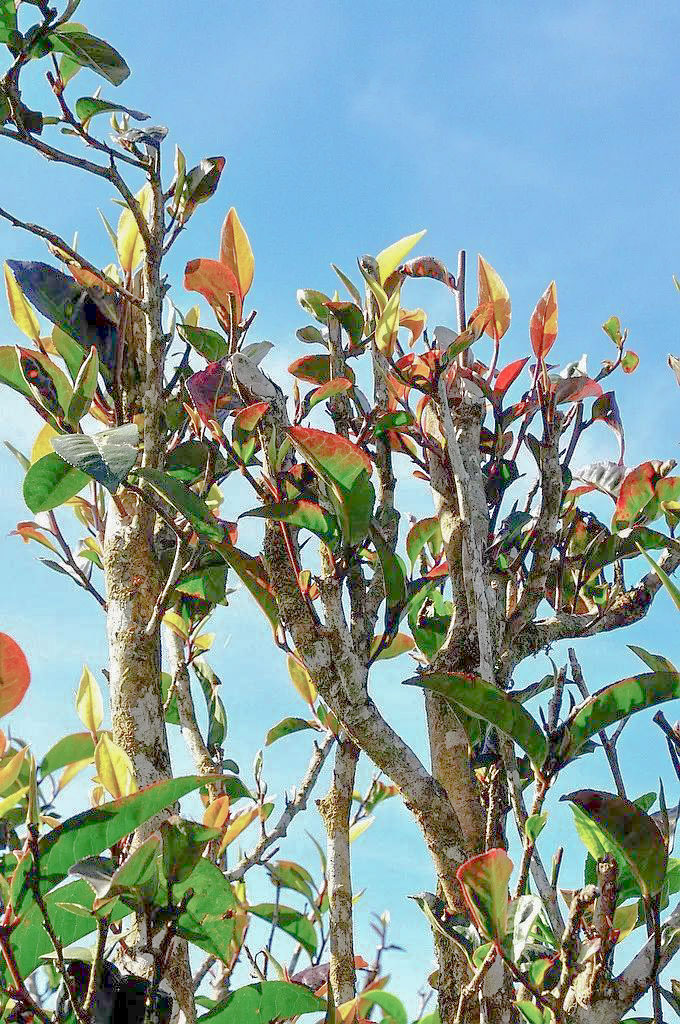
This type of purple tea is made from a ‘Zi Ya’ Purple Bud (紫芽), also known as ‘Zi Cha’ Purple Tea (紫茶) varietal. It is a naturally occurring mutated purple leaf version of Camellia sinensis var. assamica and accounts for only about 1-2% of cultivated assamica tea plants in Yunnan Province. These tea plants have purple coloured tea buds and young tea leaves, which are the result of unfavourable growing conditions and act as a natural way of protecting the tender leaves from harsh ultraviolet rays. This purple leaf varietal is highly prized in Yunnan and is used mostly for pu-erh production with some very limited black tea production as well (like our Dian Hong Jing Mai Purple Needle featured this month).
The trees that this tea comes from are wild arbor trees, which means that they are older trees that largely grow on their own. Unlike plantation bushes, which are trimmed back, these trees are allowed to grow to full height of up to five meters or more. Plucking these trees is more laborious and can only be done by hand. But this traditional way of growing the trees results in much finer flavours.
Even though this Zi Ya Purple Bud Wild Sheng Pu-erh has not been aged for that long, it already exhibits some of the finer qualities found in teas made from a Zi Ya varietal, especially the greatly reduced bitterness that you may find in other Purple Leaf (Ye Sheng) pu-erh. The large twisted dark green leaves have a slightly fruity and woody aroma. The liquor produced has a light golden colour and a brisk and smooth character. The complex profile has a fruity, woody and slightly smoky flavour. The aftertaste is a little tart with a pleasantly sweet finish and minimal astringency.
We suggest brewing at 90°C for 3-4 minutes according to your taste. It should be brewed around 3+ times depending on your taste preferences.
You can also buy this Zi Ya Purple Bud Wild Sheng Pu-erh tea in our online shop.
Dian Hong Jing Mai Purple Needle
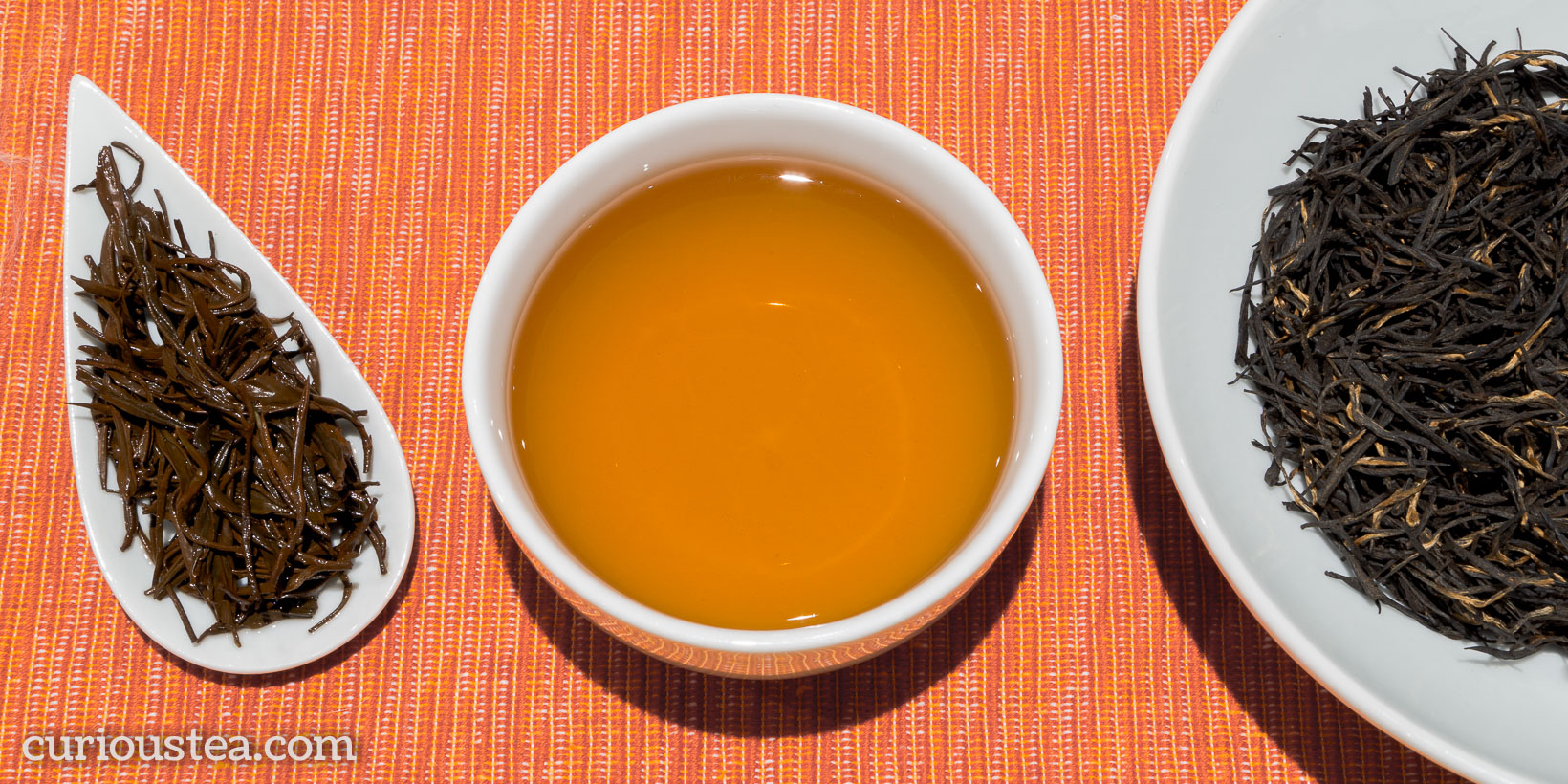
Dian Hong Jing Mai Purple Needle (滇红景迈紫針) is a characteristic Yunnan Red tea. Featuring a lovely character that is balanced and sweet, it has smooth fruity and malty notes, with a taste reminiscent of sugared plums! April 2023 harvest.
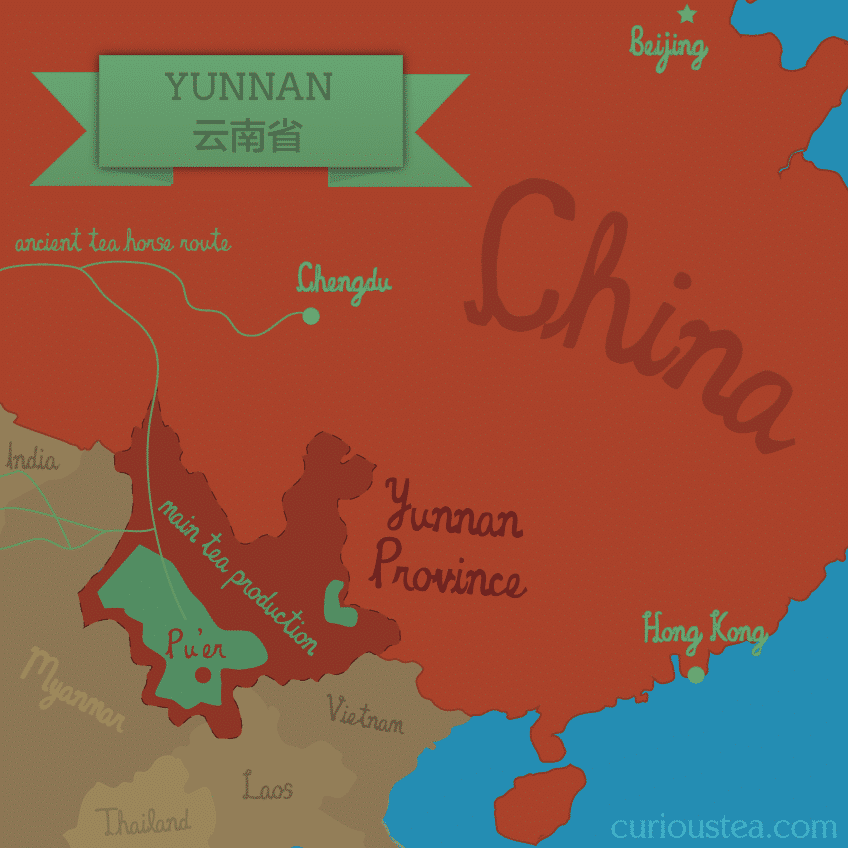
Dian Hong, literally Yunnan Red, refers to the origin and type of tea (red according to Chinese tea classification). Jing Mai refers to the location of this tea’s origin. Jing Mai mountain area (Jing Mai Shan) is located in Lancang Lahu Autonomous County under the jurisdiction of Pu’er City of Yunnan Province. Lancang Lahu Autonomous County has a large population of Lahu people. Communities of Lahu people can also be found in Myanmar and Thailand. There is a large number of villages in the Jing Mai mountain area and most of the villagers are involved in tea production.
Purple Needle in this case refers to the leaves of this tea (needle-shaped) as well as the fact that this tea is made from purple leaf tea varietal plants. This particular tea is made from a ‘Zi Ya’ Purple Bud (紫芽) varietal, which is also referred to as ‘Zi Cha’ Purple Tea (紫茶) varietal. Zi Ya purple leaf varietal tea plant is a mutated version of Camellia sinensis var. assamica and is spread across Yunnan at high altitude, accounting for 1-2% of all tea trees there. These tea plants have purple coloured tea buds and young tea leaves, which are the result of unfavourable growing conditions and act as a natural way of protecting the tender leaves from harsh ultraviolet rays. This purple leaf varietal is highly prised in Yunnan and is used mostly for pu-erh production with some very limited black tea production as well.
This Dian Hong Jing Mai Purple Needle has black long needle-shaped leaves with golden buds visible on many of the needles. The appearance of the needles is very delicate, wiry and thin. The amber liquor is very smooth and balanced. It is a little malty, with a fruity and sweet character. Pleasant notes of sugared plums and sweet citrus complete the taste.
It is best brewed at 90°C for 3-4 minutes according to your taste. It should also be brewed 3+ times, slowly increasing the steeping time with each subsequent brew.
You can also buy this Dian Hong Jing Mai Purple Needle black tea in our online shop.
We really do hope that you enjoy this tea selection and are looking forward to the selection in our April boxes, which will be a South America special! We will be featuring two teas from our friends in Colombia, a Bitaco leafy black and a newly introduced white tea. We will also be taking a trip to Brazil with two teas from Sitio Shimada, a classic black and a classic green.
If reading this has made you curious about our teas, but you don’t yet subscribe to a monthly tea selection, you can sign up for our tea boxes in just a few clicks. We ship worldwide from London, UK.
We always love to hear from you, so if you have any questions, suggestions or just want to chat about tea, email us at contact@curioustea.com, via our Facebook page or via Twitter.

